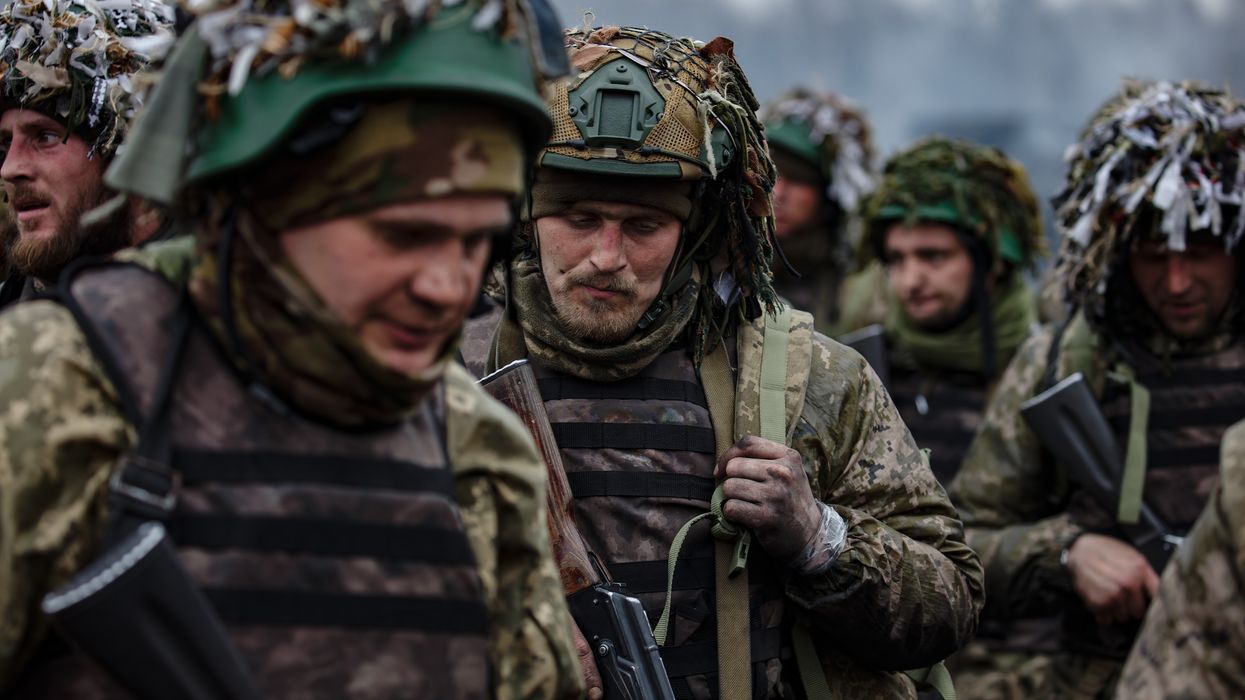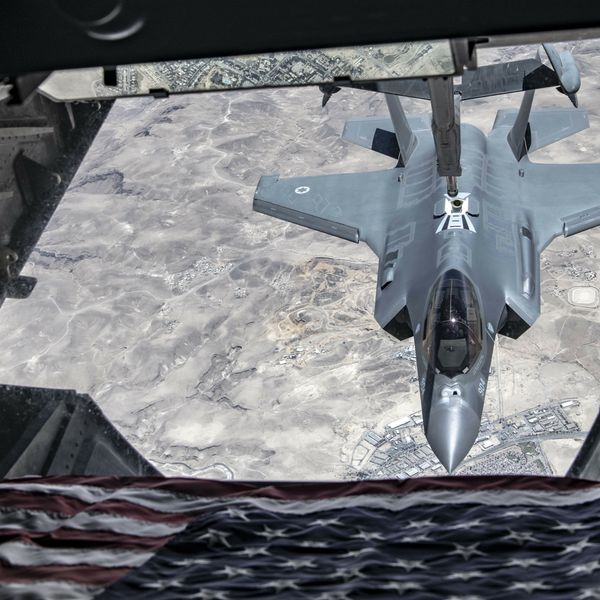Understandably enough, commentaries on the crisis between Russia and the West tend to dwell on Ukraine. After all, more than 100,000 Russian soldiers and a fearsome array of weaponry have now been emplaced around the Ukrainian border. Still, such a narrow perspective deflects attention from an American strategic blunder that dates to the 1990s and is still reverberating.
During that decade, Russia was on its knees. Its economy had shrunk by nearly 40%, while unemployment was surging and inflation skyrocketing. (It reached a monumental 86% in 1999.) The Russian military was a mess. Instead of seizing the opportunity to create a new European order that included Russia, President Bill Clinton and his foreign-policy team squandered it by deciding to expand NATO threateningly toward that country’s borders. Such a misbegotten policy guaranteed that Europe would once again be divided, even as Washington created a new order that excluded and progressively alienated post-Soviet Russia.
The Russians were perplexed — as well they should have been.
At the time, Clinton and company were hailing Russian President Boris Yeltsin as a democrat. (Never mind that he had lobbed tank shells at his own recalcitrant parliament in 1993 and, in 1996, prevailed in a crooked election, abetted weirdly enough by Washington.) They praised him for launching a “transition” to a market economy, which, as Nobel Laureate Svetlana Alexievich so poignantly laid out in her book Second Hand Time, would plunge millions of Russians into penury by “decontrolling” prices and slashing state-provided social services.
Why, Russians wondered, would Washington obsessively push a Cold War NATO alliance ever closer to their borders, knowing that a reeling Russia was in no position to endanger any European country?
An alliance saved from oblivion
Unfortunately, those who ran or influenced American foreign policy found no time to ponder such an obvious question. After all, there was a world out there for the planet’s sole superpower to lead and, if the U.S. wasted time on introspection, “the jungle,” as the influential neoconservative thinker Robert Kagan put it, would grow back and the world would be “imperiled.” So, the Clintonites and their successors in the White House found new causes to promote using American power, a fixation that would lead to serial campaigns of intervention and social engineering.
The expansion of NATO was an early manifestation of this millenarian mindset, something theologian Reinhold Niebuhr had warned about in his classic book, The Irony of American History. But who in Washington was paying attention, when the world’s fate and the future were being designed by us, and only us, in what Washington Post neoconservative columnist Charles Krauthammer celebrated in 1990 as the ultimate “unipolar moment” — one in which, for the first time ever, the United States would possess peerless power?
Still, why use that opportunity to expand NATO, which had been created in 1949 to deter the Soviet-led Warsaw Pact from rolling into Western Europe, given that both the Soviet Union and its alliance were now gone? Wasn’t it akin to breathing life into a mummy?
To that question, the architects of NATO expansion had stock answers, which their latter-day disciples still recite. The newly born post-Soviet democracies of Eastern and Central Europe, as well as other parts of the continent, could be “consolidated” by the stability that only NATO would provide once it inducted them into its ranks. Precisely how a military alliance was supposed to promote democracy was, of course, never explained, especially given a record of American global alliances that had included the likes of Philippine strongman Ferdinand Marcos, Greece under the colonels, and military-ruled Turkey.
And, of course, if the denizens of the former Soviet Union now wanted to join the club, how could they rightly be denied? It hardly mattered that Clinton and his foreign policy team hadn’t devised the idea in response to a raging demand for it in that part of the world. Quite the opposite, consider it the strategic analog to Say’s Law in economics: they designed a product and the demand followed.
Domestic politics also influenced the decision to push NATO eastward. President Clinton had a chip on his shoulder about his lack of combat credentials. Like many American presidents (31 to be precise), he hadn’t served in the military, while his opponent in the 1996 elections, Senator Bob Dole, had been badly injured fighting in World War II. Worse yet, his evasion of the Vietnam-era draft had been seized upon by his critics, so he felt compelled to show Washington’s power brokers that he had the stomach and temperament to safeguard American global leadership and military preponderance.
In reality, because most voters weren’t interested in foreign policy, neither was Clinton, and that actually gave an edge to those in his administration deeply committed to NATO expansion. From 1993, when discussions about it began in earnest, there was no one of significance to oppose them. Worse yet, the president, a savvy politician, sensed that the project might even help him attract voters in the 1996 presidential election, especially in the Midwest, home to millions of Americans with eastern and central European roots.
Furthermore, given the support NATO had acquired over the course of a generation in Washington’s national security and defense industry ecosystem, the idea of mothballing it was unthinkable, since it was seen as essential for continued American global leadership. Serving as a protector par excellence provided the United States with enormous influence in the world’s premier centers of economic power of that moment. And officials, think-tankers, academics, and journalists — all of whom exercised far more influence over foreign policy and cared much more about it than the rest of the population — found it flattering to be received in such places as a representative of the world’s leading power.
Under the circumstances, Yeltsin’s objections to NATO pushing east (despite verbal promises made to the last head of the Soviet Union, Mikhail Gorbachev, not to do so) could easily be ignored. After all, Russia was too weak to matter. And in those final Cold War moments, no one even imagined such NATO expansion. So, betrayal? Perish the thought! No matter that Gorbachev steadfastly denounced such moves and did so again this past December.
You reap what you sow
Russian President Vladimir Putin is now pushing back, hard. Having transformed the Russian army into a formidable force, he has the muscle Yeltsin lacked. But the consensus inside the Washington Beltway remains that his complaints about NATO’s expansion are nothing but a ruse meant to hide his real concern: a democratic Ukraine. It’s an interpretation that conveniently absolves the U.S. of any responsibility for ongoing events.
Today, in Washington, it doesn’t matter that Moscow’s objections long preceded Putin’s election as president in 2000 or that, once upon a time, it wasn’t just Russian leaders who didn’t like the idea. In the 1990s, several prominent Americans opposed it and they were anything but leftists. Among them were members of the establishment with impeccable Cold War credentials: George Kennan, the father of the containment doctrine; Paul Nitze, a hawk who served in the Reagan administration; the Harvard historian of Russia Richard Pipes, another hardliner; Senator Sam Nunn, one of the most influential voices on national security in Congress; Senator Daniel Patrick Moynihan, a one-time U.S. ambassador to the United Nations; and Robert McNamara, Lyndon Johnson’s Secretary of Defense. Their warnings were all remarkably similar: NATO’s expansion would poison relations with Russia, while helping to foster within it authoritarian and nationalist forces.
The Clinton administration was fully aware of Russia’s opposition. In October 1993, for example, James Collins, the chargé d’affaires at the U.S. embassy in Russia, sent a cable to Secretary of State Warren Christopher, just as he was about to travel to Moscow to meet Yeltsin, warning him that NATO’s enlargement was “neuralgic to Russians” because, in their eyes, it would divide Europe and shut them out. He warned that the alliance’s extension into Central and Eastern Europe would be “universally interpreted in Moscow as directed at Russia and Russia alone” and so regarded as “neo-containment.”
That same year, Yeltsin would send a letter to Clinton (and the leaders of the United Kingdom, France, and Germany) fiercely opposing NATO expansion if it meant admitting former Soviet states while excluding Russia. That would, he predicted, actually “undermine Europe’s security.” The following year, he clashed publicly with Clinton, warning that such expansion would “sow the seeds of mistrust” and “plunge post-Cold War Europe into a cold peace.” The American president dismissed his objections: the decision to offer former parts of the Soviet Union membership in the alliance’s first wave of expansion in 1999 had already been taken.
The alliance’s defenders now claim that Russia accepted it by signing the 1997 NATO-Russia Founding Act. But Moscow really had no choice, being dependent then on billions of dollars in International Monetary Fund loans (possible only with the approval of the United States, that organization’s most influential member). So, it made a virtue of necessity. That document, it’s true, does highlight democracy and respect for the territorial integrity of European countries, principles Putin has done anything but uphold. Still, it also refers to “inclusive” security across “the Euro-Atlantic area” and “joint decision-making,” words that hardly describe NATO’s decision to expand from 16 countries at the height of the Cold War to 30 today.
By the time NATO held a summit in Romania’s capital, Bucharest, in 2008, the Baltic states had become members and the revamped alliance had indeed reached Russia’s border. Yet the post-summit statement praised Ukraine’s and Georgia’s “aspirations for membership,” adding “we agreed today that these countries will become members of NATO.” President George W. Bush’s administration couldn’t possibly have believed Moscow would take Ukraine’s entry into the alliance lying down. The American ambassador to Russia, William Burns — now the head of the CIA — had warned in a cable two months earlier that Russia’s leaders regarded that possibility as a grave threat to their security. That cable, now publicly available, all but foresaw a train wreck like the one we’re now witnessing.
But it was the Russia-Georgia war — with rare exceptions mistakenly presented as an unprovoked, Moscow-initiated attack — that provided the first signal Vladimir Putin was past the point of issuing protests. His annexation of Crimea from Ukraine in 2014, following an illegal referendum, and the creation of two “republics” in the Donbas, itself part of Ukraine, were far more dramatic moves that effectively initiated a second Cold War.
Averting disaster
And now, here we are. A divided Europe, increasing instability amid military threats by nuclear-armed powers, and the looming possibility of war, as Putin’s Russia, its troops and armaments massed around Ukraine, demand that NATO expansion cease, Ukraine be barred from the alliance, and the United States and its allies finally take Russia’s objections to the post-Cold War security order seriously.
Of the many obstacles to averting war, one is particularly worth noting: the widespread claim that Putin’s concerns about NATO are a smokescreen obscuring his true fear: democracy, particularly in Ukraine. Russia, however, repeatedly objected to NATO’s eastward march even when it was still being hailed as a democracy in the West and long before Putin became president in 2000. Besides, Ukraine has been a democracy (however tumultuous) since it became independent in 1991.
So why the Russian buildup now?
Vladimir Putin is anything but a democrat. Still, this crisis is unimaginable without the continual talk about someday ushering Ukraine into NATO and Kyiv’s intensifying military cooperation with the West, especially the United States. Moscow views both as signs that Ukraine will eventually join the alliance, which — not democracy — is Putin’s greatest fear.
Now for the encouraging news: the looming disaster has finally energized diplomacy. We know that the hawks in Washington will deplore any political settlement that involves compromise with Russia as appeasement. They’ll liken President Biden to Neville Chamberlain, the British Prime Minister who, in 1938, gave way to Hitler in Munich. Some of them advocate a “massive weapons airlift” to Ukraine, à la Berlin as the Cold War began. Others go further, urging Biden to muster an “international coalition of the willing, readying military forces to deter Putin and, if necessary, prepare for war.”
Sanity, however, can still prevail through a compromise. Russia could settle for a moratorium on Ukrainian membership in NATO for, say, two decades, something the alliance should be able to accept because it has no plans to fast-track Kyiv’s membership anyway. To gain Ukraine’s assent, it would be guaranteed the freedom to secure arms for self-defense and, to satisfy Moscow, Kyiv would agree never to allow NATO bases or aircraft and missiles capable of striking Russia on its territory.
The deal would have to extend beyond Ukraine if it is to ward off crises and war in Europe. The United States and Russia would need to summon the will to discuss arms control there, including perhaps an improved version of the 1987 Intermediate-Range Nuclear Forces Treaty that President Trump ditched in 2019. They would also need to explore confidence-building measures like excluding troops and armaments from designated areas along the NATO-Russian borderlands and steps to prevent the (now-frequent) close encounters between American and Russian warplanes and warships that could careen out of control.
Over to the diplomats. Here’s wishing them well.
This article has been republished with permission from TomDispatch.
















